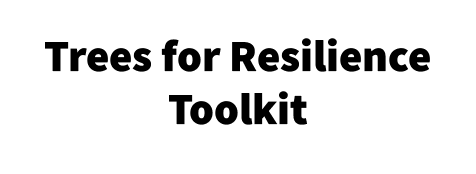FUNDING
How to Build Sustainable Capacity
Acquiring seed funding for projects is one thing, but building and supporting capacity for a sustainable and healthy community forest requires stable funding. Collaboration amongst all stakeholders often leads to demonstrating how green infrastructure can be maintained and enhanced with interdepartmental and initiative funding, as well as through infrastructure and utility fees.
Considerations about Funding
Consider alternative funding sources to replace or supplement general fund and increase certainty and capacity with efforts.
- Look to other departments who manage and/or benefit from forests such as Public Works (roads, stormwater), Parks (open space).
- Explore critical community priorities for financial support, such as Sustainability Initiatives or Climate Action Plans.
Resource Links by Topic
Stormwater Utility
Programs
Seed (Project) Funding
City Models
- Stormwater Utility Rates Supporting Urban Tree and Urban Forest Planning, Planting, and Management – A technical memorandum that summarizes research, provides template code, ordinance language, and presentation materials to codify the recognition of trees and urban forest’s role in stormwater mitigation, allowing utility rates to fund urban forest management.
- Stormwater Infrastructure Funding and Equity – An EPA webinar (slides) of three case studies that demonstrate concrete examples of building equitable green infrastructure and associated funding/financing mechanisms.
- City Forest Credits – A 501(c)(3) nonprofit carbon registry (based in Seattle) that manages carbon and impact standards for metropolitan areas in the United States, in which companies can purchase carbon offsets from urban forest projects, or invest in certified planting projects with health, equity, and environmental impacts. Tukwila WA is exploring this in partnership with King Conservation District. A regional success story is with Treasure Valley Municipal Parks (Idaho).
- King County Programs: Carbon credits with Forest Carbon Program and preservation of valuable community forests through Transfer Development Rights (TDR).
- Washington State Urban and Community Forestry program (WADNR) – This program offers grants to cities and towns, counties, tribal governments, non-profit organizations, and educational institutions to improve the health of community forests and develop local urban forestry programs. To get an idea of types of projects funded, here is the award list for 2022.
- National Estuary Program: Stormwater Strategic Initiative Grants (WADOE) – A significant funding source for implementation strategies and near-term actions as identified in the Puget Sound Comprehensive Conservation and Management Plan.
- King Conservation District – Urban Forest Stewardship – The main component of the program is investing up to $150,000 annually through partnerships with member jurisdictions to support regional and collaborative urban forestry initiatives that bridge stewardship across private and public lands.
- Tree Relief for Energy Efficiency (2025 Snohomish County PUD service area) – Tree Power Program Funding for urban forestry projects in public spaces, aimed at reducing urban heat islands.
- City of Snoqualmie – See Snoqualmie’s Success Story where they utilized the Stormwater Utility Rates resource, conducted a Natural Infrastructure Assessment to determine the dollar value of the trees in stormwater mitigation, and successful secured stormwater utility rates to significantly fund the city’s urban forestry program.
- City of Tacoma – See Tacoma’s Success Story where the urban forestry program had its fortunate beginning in the stormwater utility division and acquired expanded funding support when it became a part of the Sustainability Office.
- The Ultimate Guide to Urban Forestry Funding – A collection of the creative ways cities and nonprofits fund their urban forestry work.
